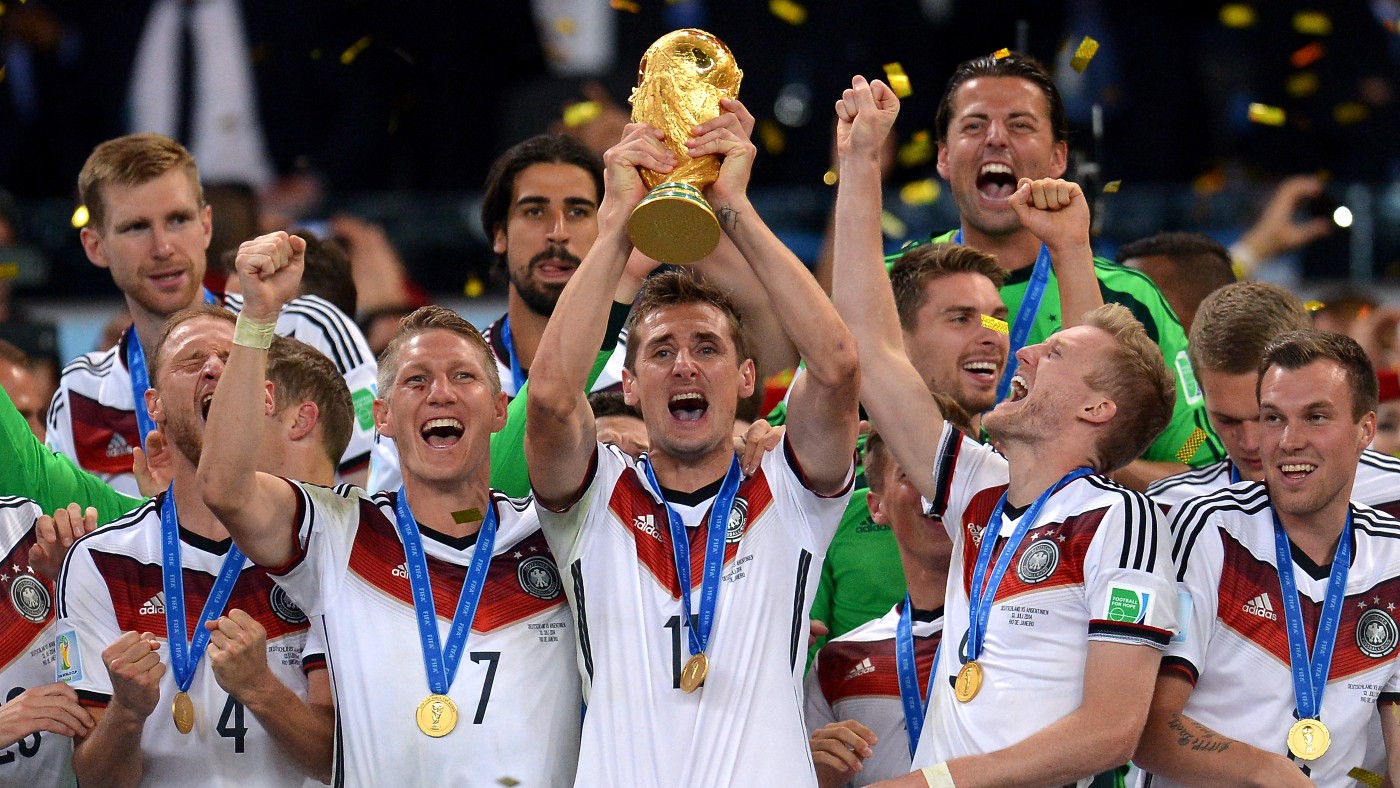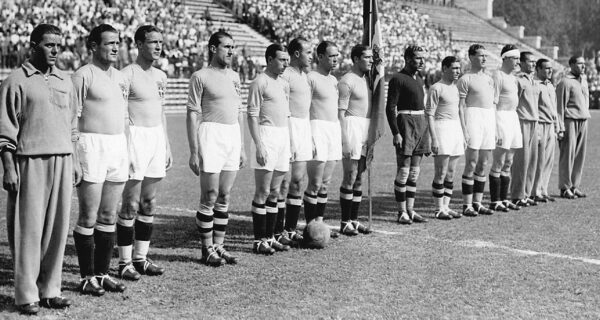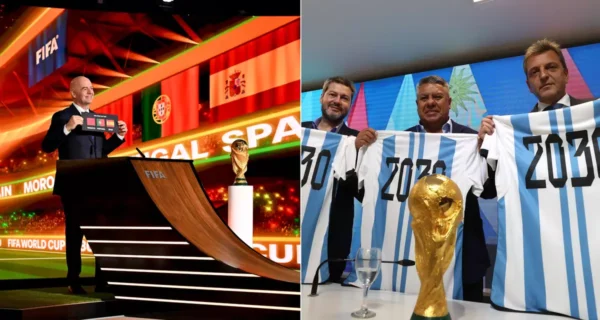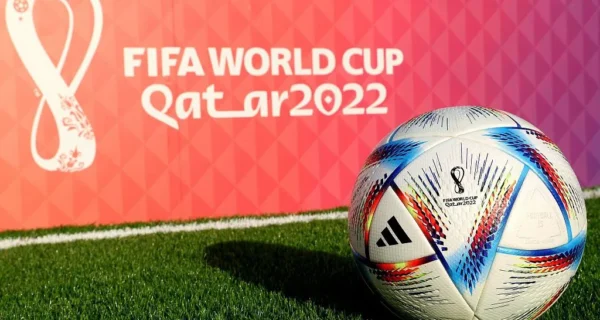This Article Contains
The FIFA World Cup captivates billions of fans worldwide as the most prestigious international soccer tournament. Nations compete for the coveted trophy in a spectacular event that creates unforgettable moments transcending the sport itself.
This comprehensive guide explains the tournament’s schedule, history, and why it follows its distinctive timing pattern.
The FIFA World Cup Schedule
The FIFA World Cup takes place every four years. This quadrennial cycle has remained consistent since the tournament’s inception in 1930, with only one significant interruption during World War II. The four-year spacing creates enormous anticipation among fans and gives the competition its special status in global sports.
FIFA deliberately established this four-year interval to distinguish the World Cup from other sporting events. This scheduling decision has proven successful, transforming the tournament into a cultural phenomenon that marks distinct eras in football history.
Historical Background of the World Cup Cycle
Tournament Origins
The inaugural FIFA World Cup occurred in 1930 when Uruguay hosted and won the competition featuring just 13 nations. FIFA designed the tournament as a quadrennial event from the beginning, establishing the four-year pattern that continues today.
Soccer officials chose this timing to differentiate the World Cup from the Olympic Games. They wanted to create a standalone football championship that would occupy its own space in the international sports calendar.
World War II Interruption
The only break in the World Cup’s four-year cycle happened because of World War II. FIFA canceled the tournaments scheduled for 1942 and 1946 as nations focused on the global conflict and its aftermath. This created a 12-year gap between competitions, the longest in World Cup history.
These missing tournaments, sometimes called “phantom World Cups,” remain subjects of speculation among football historians. Many football experts wonder which nations might have triumphed during those years.
Post-War Consistency
The World Cup resumed in 1950 when Brazil hosted the fourth tournament. Uruguay emerged victorious, defeating the host nation in the final match. This competition reestablished the four-year cycle that has continued uninterrupted for over seven decades.
This post-war consistency helped cement the World Cup’s place in sports culture. Generations of fans have grown accustomed to the tournament marking four-year intervals in their lives.
Why the Four-Year Cycle Makes Sense
Logistical Requirements
Organizing a World Cup requires enormous preparation. Host countries typically need several years to build or renovate stadiums, upgrade transportation infrastructure, and prepare accommodations for the massive influx of visitors.
For example, Qatar spent over a decade preparing for the 2022 World Cup, constructing seven new stadiums and numerous other facilities. Such massive undertakings justify the extended preparation period between tournaments.
Qualifying Process
The FIFA World Cup qualifying process spans approximately three years. Over 200 nations compete across six continental confederations for limited spots in the finals, requiring an extensive schedule of matches.
This qualification journey forms an essential part of the World Cup experience. Teams battle through regional tournaments, creating narratives and rivalries that build anticipation for the main event.
Player Considerations
The four-year gap helps prevent player burnout. Professional footballers already face demanding schedules with club competitions, continental tournaments, and other international matches. More frequent World Cups would increase physical demands and injury risks.
Many players consider the World Cup the pinnacle of their careers. The four-year wait makes participation more meaningful, with most professionals getting only two or three opportunities to represent their country on this stage.
Historical Timeline of FIFA World Cups
Early Tournaments (1930-1950)
The early World Cup era established the tournament’s importance in global football. Uruguay (1930), Italy (1934 and 1938), and Uruguay again (1950) claimed the first four championships. These competitions laid the foundation for what would become the world’s most watched sporting event.
Despite limited global participation by today’s standards, these early tournaments generated tremendous excitement. They demonstrated the potential of international football as a unifying force across cultures and borders.
Golden Era (1954-1978)
This period saw Brazil emerge as a dominant force, winning three titles (1958, 1962, 1970). Germany claimed their first championship in 1954, England won on home soil in 1966, and Argentina secured their first title as hosts in 1978.
Television broadcast helped popularize these tournaments globally. The 1970 World Cup in Mexico became the first broadcast in color, showcasing Brazil’s magnificent team led by Pelé to audiences worldwide.
Modern Expansion (1982-Present)
The World Cup expanded to 24 teams in 1982 and then to 32 teams in 1998, increasing global representation. Brazil added two more titles (1994, 2002), Germany claimed three more championships (1990, 2014, 2018), and new winners emerged including Spain (2010) and France (1998, 2018).
Argentina’s victory in 2022, led by Lionel Messi, brought their total to three titles. The tournament now attracts billions of viewers and generates billions in revenue, demonstrating remarkable growth across its four-year cycles.
Proposals for Schedule Changes
The Biennial World Cup Debate
In recent years, FIFA has explored holding the World Cup every two years instead of four. Former Arsenal manager Arsene Wenger, now working with FIFA, has advocated for this change to create more opportunities for nations to participate.
A FIFA survey indicated some fan support for more frequent tournaments. According to their research, approximately 55% of respondents favored holding the World Cup more frequently than every four years.
Opposition to Changing the Cycle
Strong resistance to the biennial proposal has emerged from UEFA (European football’s governing body), major leagues, and player unions. Critics argue that more frequent World Cups would devalue the tournament’s prestige and congest an already crowded football calendar.
The Premier League released a statement opposing the change, citing concerns about “player welfare” and “the competitiveness, calendar, structures and traditions of domestic football.” This sentiment echoes across many footballing organizations.
The Future of the FIFA World Cup
The 2026 Tournament Expansion
The next FIFA World Cup in 2026 will introduce significant changes despite maintaining the four-year cycle. The tournament will expand from 32 to 48 participating teams, creating more opportunities for nations to qualify and increasing the total number of matches.
Canada, Mexico, and the United States will jointly host this expanded tournament. This marks the first time three countries have shared hosting duties for a World Cup, presenting new logistical challenges and opportunities.
Tournament Calendar
The 2026 World Cup will run from June 11 to July 19, maintaining the traditional summer schedule for northern hemisphere nations. The opening match will take place at Mexico’s iconic Estadio Azteca, with the final scheduled for New York/New Jersey.
This timeline allows for the expanded format without disrupting the established four-year cycle. The tournament will feature 104 matches across 16 host cities in the three North American countries.
FAQs
1. Has the FIFA World Cup always been held every four years?
Yes, the FIFA World Cup has maintained a four-year cycle since its inception in 1930. The only exception occurred during World War II, when the tournaments scheduled for 1942 and 1946 were canceled. This consistent quadrennial schedule has become a fundamental aspect of the tournament’s tradition.
2. Why doesn’t FIFA hold the World Cup more frequently?
FIFA maintains the four-year cycle because it allows adequate time for qualifying competitions across all continents, gives host nations sufficient preparation time, prevents player burnout, and preserves the tournament’s prestige. More frequent tournaments would likely diminish its special status.
3. Which country has won the most FIFA World Cups?
Brazil has won the FIFA World Cup a record five times (1958, 1962, 1970, 1994, and 2002). They remain the only nation to have participated in every World Cup tournament since 1930. Germany and Italy follow with four championships each, Argentina has won three titles.
4. Will the FIFA World Cup ever change to a two-year cycle?
The possibility exists, but strong opposition from UEFA, major leagues, and player unions makes this unlikely in the near future. FIFA conducted surveys showing some fan support for more frequent tournaments, but concerns about player welfare present significant obstacles.
5. How will the 2026 FIFA World Cup differ from previous tournaments?
The 2026 FIFA World Cup will feature 48 teams instead of the current 32, making it the largest in history. It will be jointly hosted by Canada, Mexico, and the United States, marking the first time three countries have shared hosting duties.












